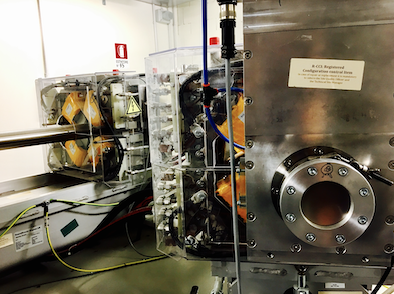Speaker
Description
Radiation therapy is the most-effective cytotoxic therapy available for the treatment of localized solid cancers. With the introduction of charged particle radiotherapy (proton therapy), the area of irradiated healthy tissue surrounding the tumor was further decreased. The aim of this study is to investigate the role of p53 in both X-rays and proton therapy treatments. p53 is a transcription factor with a key role in stress-depended regulation of DNA repair, cell cycle arrest, cellular senescence, and apoptosis.
As a model, we used 3 isogenic derivatives of the colon cancer-derived cells HCT116: parental, TP53-/-, and CDKN1A-/- (coding for p21). To uncover treatment-specific biological effects, we analyzed cellular responses to irradiation, focusing on DNA damage, p53 targets activation, apoptosis induction, and 3D culture disaggregation.
As expected, X-rays caused DNA damage as early as 4 hours after treatment in all cells, detected by the formation of γ-H2AX foci. Interestingly, 24 hours post-treatment, parental cells repaired the radiation-induced damages more rapidly in comparison with p53 null cells. Moreover, the p53 null clone showed a higher apoptotic rate, indicating that p53-/- cells could be more radiosensitive in respect to p53+/+ cells. To better mimic the shrinkage effect of radiation therapy on solid cancers, 3D spheroids were used. HCT116 parental, p53-/-, and p21-/- cells spontaneously formed spheroids in ultra-low attachment plates. Notably, while parental spheroids showed a reduction in diameter 13 days after the treatment, but still maintained a proper 3D organization, the p53-/- and p21-/- spheroids completely disaggregated. Moreover, the viability of p53-/- and p21-/- spheroids drastically dropped in response to X-rays, and analysis of PARP cleavage highlighted an increase in apoptosis particularly in p53 and p21 null cells.
These results suggest that the absence of p53-dependent responses through p21 enhances the sensitivity to irradiation.

